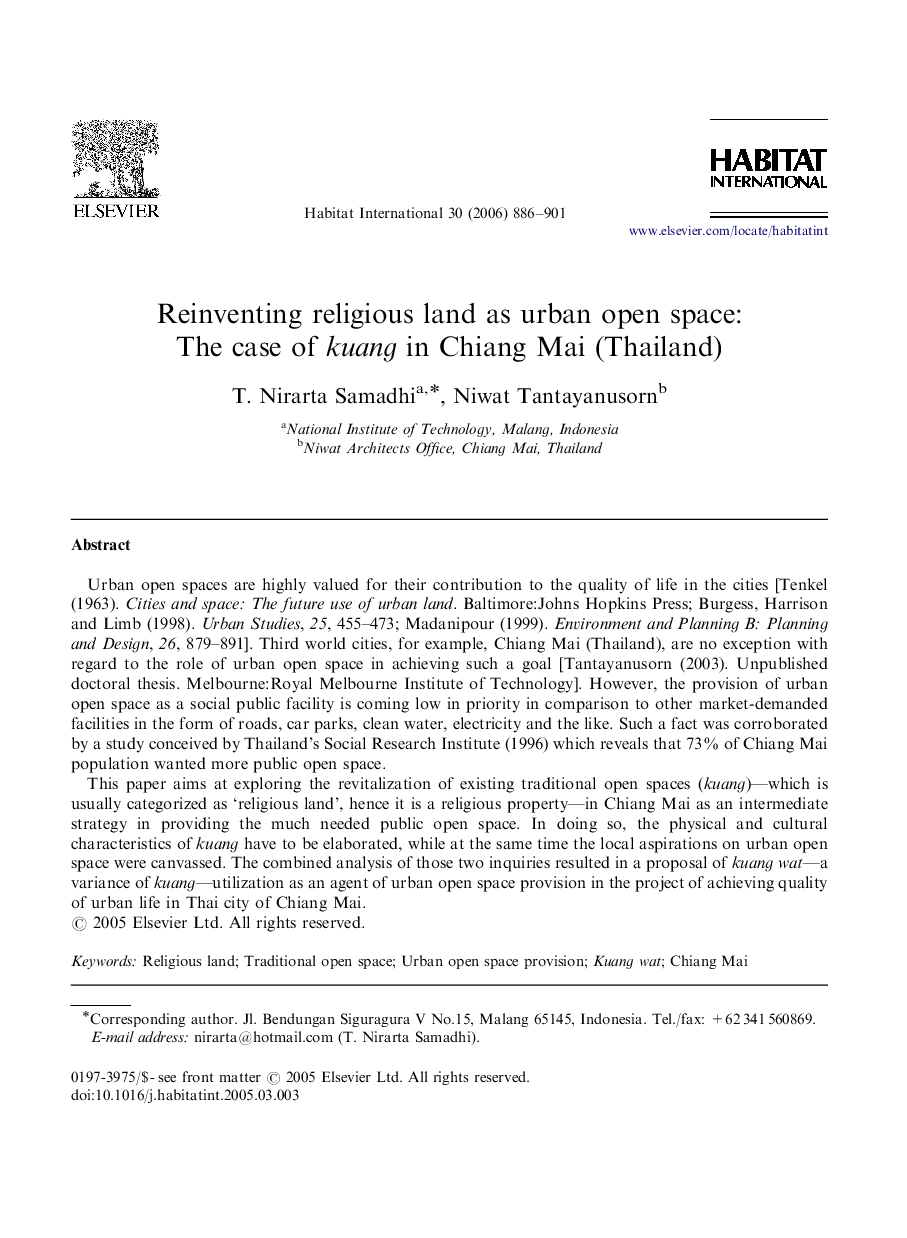| Article ID | Journal | Published Year | Pages | File Type |
|---|---|---|---|---|
| 1048538 | Habitat International | 2006 | 16 Pages |
Urban open spaces are highly valued for their contribution to the quality of life in the cities [Tenkel (1963). Cities and space: The future use of urban land. Baltimore:Johns Hopkins Press; Burgess, Harrison and Limb (1998). Urban Studies, 25, 455–473; Madanipour (1999). Environment and Planning B: Planning and Design, 26, 879–891]. Third world cities, for example, Chiang Mai (Thailand), are no exception with regard to the role of urban open space in achieving such a goal [Tantayanusorn (2003). Unpublished doctoral thesis. Melbourne:Royal Melbourne Institute of Technology]. However, the provision of urban open space as a social public facility is coming low in priority in comparison to other market-demanded facilities in the form of roads, car parks, clean water, electricity and the like. Such a fact was corroborated by a study conceived by Thailand's Social Research Institute (1996) which reveals that 73% of Chiang Mai population wanted more public open space.This paper aims at exploring the revitalization of existing traditional open spaces (kuang)—which is usually categorized as ‘religious land’, hence it is a religious property—in Chiang Mai as an intermediate strategy in providing the much needed public open space. In doing so, the physical and cultural characteristics of kuang have to be elaborated, while at the same time the local aspirations on urban open space were canvassed. The combined analysis of those two inquiries resulted in a proposal of kuang wat—a variance of kuang—utilization as an agent of urban open space provision in the project of achieving quality of urban life in Thai city of Chiang Mai.
